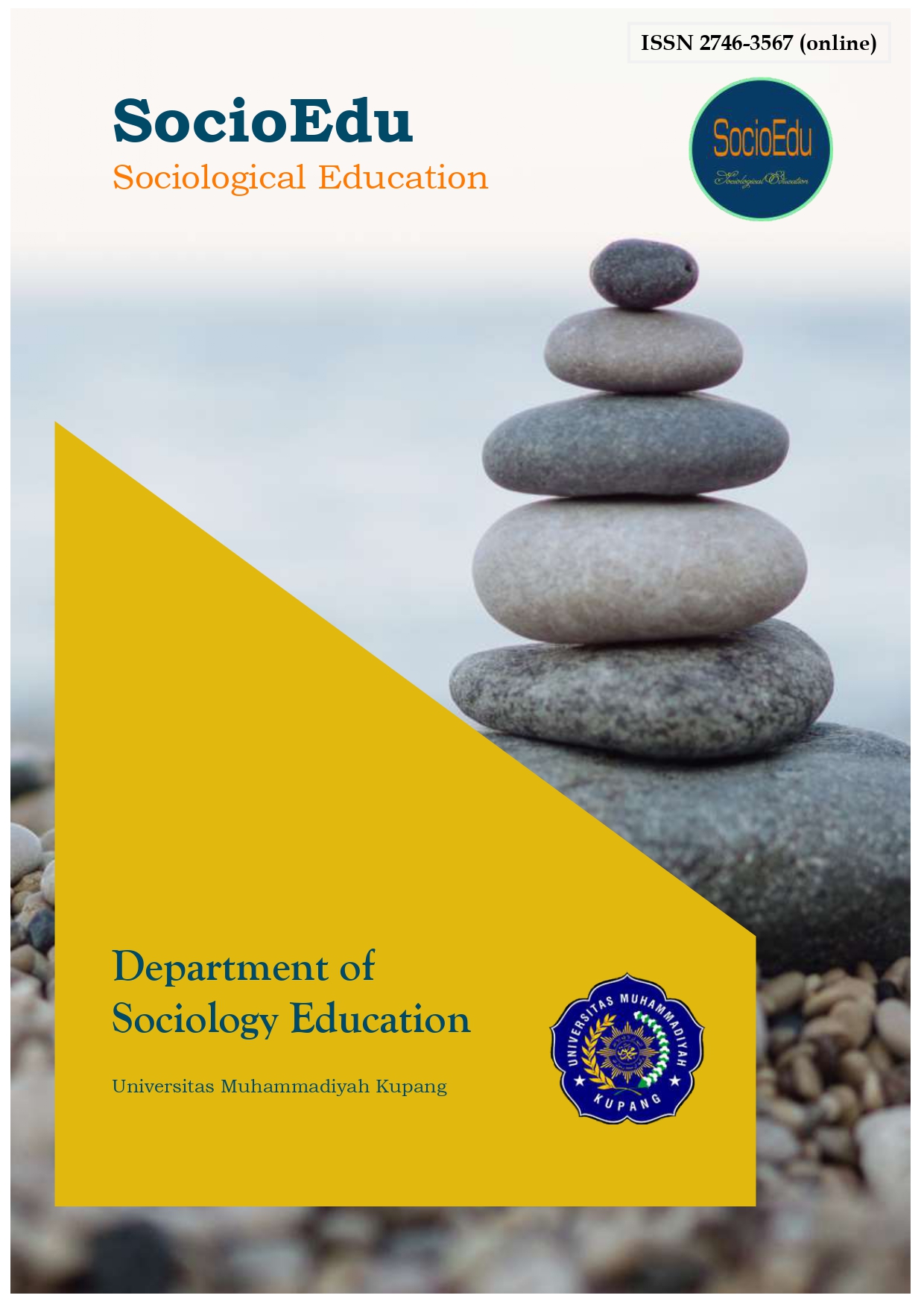Main Article Content
Abstract
This study aims to analyze the form and role of social capital in the management of the Pantai Bidadari tourist attraction by BUMDes Sepakat Sejahtera in Subik Village, Buay Pematang Ribu Ranau Tengah District, South OKU Regency. The research method used is qualitative with a case study approach. Data were collected through observation, in-depth interviews, and documentation, then analyzed using Robert Putnam's social capital theory which includes three main dimensions: trust, networks, and norms. The results of the study indicate that social capital plays an important role in building collaboration between managers, communities, and village governments. The form of trust is reflected through the involvement of local communities in managing and accepting village policies. Social networks are formed through mutual cooperation, socialization activities, and participation in youth organizations. Social norms develop through obedience to local rules in maintaining coastal sustainability. Social capital is a driving force in strengthening community participation and supporting the sustainability of tourism management. This study emphasizes the importance of strengthening social capital as a strategy for empowering and developing sustainable community-based tourism.
Keywords
Article Details

This work is licensed under a Creative Commons Attribution 4.0 International License.
References
- Astuti, M. T., & Noor, A. A. (n.d.). Mar-hanani Tri Astuti dan Any Ariani Noor: Daya Tarik Morotai Sebagai Destinasi Wisata Sejarah dan Bahari DAYA TARIK MOROTAI SEBAGAI DESTI-NASI WISATA SEJARAH DAN BAHA-RI THE ATTRACTIVENESS OF MO-ROTAI AS HISTORICAL AND MA-RINE TOURISM DESTINATION.
- Mappasomba, Z., Hakim, D. H., Yunus, S., & Yusuf, M. (2024). Sustainability Study and Management Scenarios of Rammang-Rammang Geopark, Maros Regency, South Sulawesi Province. Jurnal Kepariwisataan Indonesia: Jurnal Penelitian Dan Pengembangan Kepariwisataan Indonesia, 18(2), 287–314. https://doi.org/10.47608/jki.v18i22024.287-314
- Ma’ruf, A. (2020). ANALISIS MEDAN KEKUATAN TERHADAP BARA-PAN KEBO SEBAGAI ATRAKSI COMMUNITY BASED TOURISM (CBT) DI KABUPATEN SUMBA-WA BARAT Force Field Analysis on Barapan Kebo as Community Based Tourism (CBT) Attraction in West Sumbawa Regency. In Jurnal Kepa-riwisataan Indonesia (Vol. 14, Issue 1).
- Nashar, A., Jawiah, S., Brata, J. T., Lebang, N. S., & Artikel, I. (2023). Arus Jurnal Sosial dan Humaniora (AJSH) Modal Sosial Pengelolaan Pariwisata Kota Kendari INFO PENULIS. 3(3), 2023. http://jurnal.ardenjaya.com/index.php/ajshhttp://jurnal.ardenjaya.com/index.php/ajsh
- Nursalim, I., Sayuti, R. H., Wahyudi, D., Anggraeni, P., & Anggraini, M. (2023). Isnan Nursalim 1 , dkk Jurnal Analisa Sosiologi Oktober (Vol. 12, Is-sue 4).
- Rustendi, T. (n.d.). PENDEKATAN KUANTITATIF DALAM STUDI KA-SUS PADA PENELITIAN BIDANG AKUNTANSI. http://jurnal.unsil.ac.id/index.php/jak
- Sari, I. W., Indah, V., & Pinasti, S. (n.d.). STRATEGI POKDARWIS DALAM PEMBERDAYAAN MASYARAKAT MELALUI DESA WISATA (STUDI KASUS DESA WISATA GIYANTI, WONOSOBO).
- Silalahi, R. J., & Agustina, N. (2024). Anal-ysis of Tourism Performance in Ten Priority Tourism Destinations in Indo-nesia. Jurnal Kepariwisataan Indone-sia: Jurnal Penelitian Dan Pengem-bangan Kepariwisataan Indonesia, 18(2), 197–212. https://doi.org/10.47608/jki.v18i22024.197-212
- Simorangkir, C. O., Ramadhan, G., Sukran, M. A., & Manalu, T. (2024). Tourism Development Impact on Economic Growth and Poverty Alleviation in West Java. Jurnal Kepariwisataan In-donesia: Jurnal Penelitian Dan Pengembangan Kepariwisataan Indo-nesia, 18(2), 175–196. https://doi.org/10.47608/jki.v18i22024.175-196
